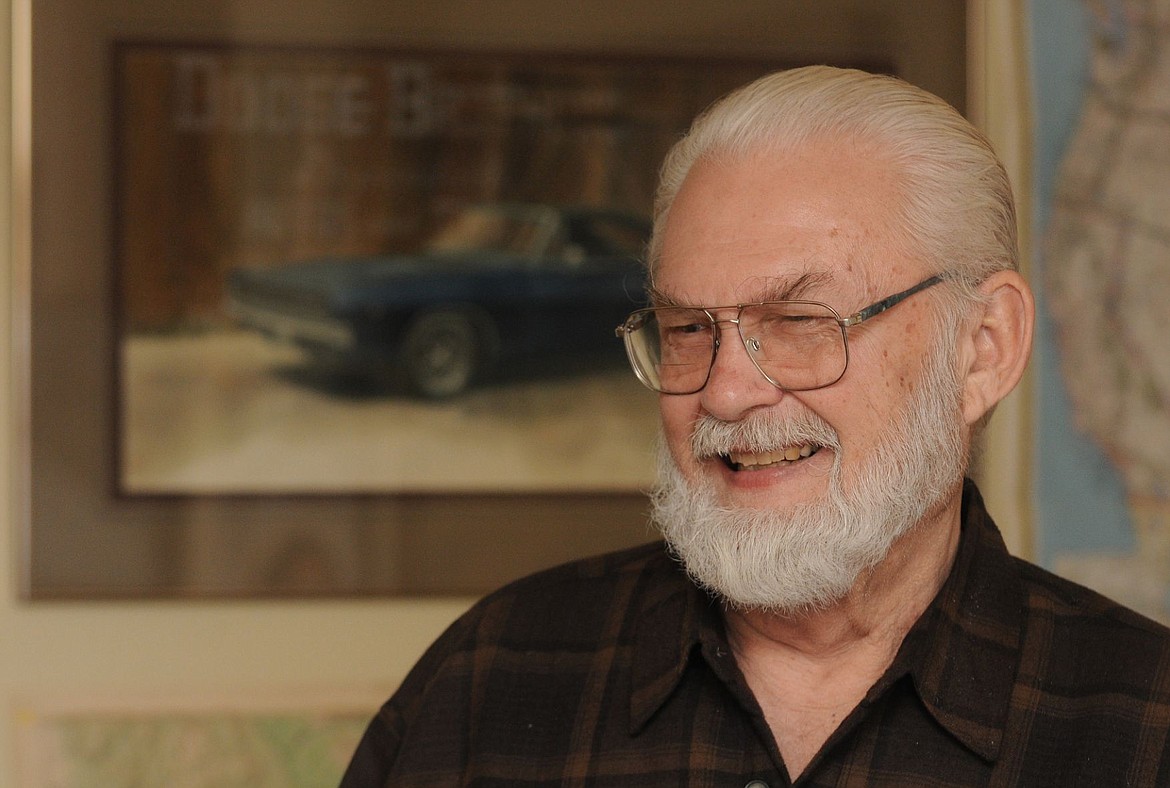The man behind the 1968 Charger
When he dropped out of Michigan State’s fine arts program just days into a fresh semester, Richard Sias never expected that just a few years later, he would be designing one of the most iconic cars to emerge from the 1960s.
The now-famous look of the 1968 Dodge Charger was the brainchild of Richard Sias, 77, who now enjoys a quiet retirement at his home on the shore of Bitterroot Lake near Marion.
Sias grew up in Midland, a small city in central Michigan about two hours northwest of Detroit. His father was an engineer, but that trajectory never felt like a fit for him.
“My dad was of the opinion that cars can wait,” Sias says, his face breaking into a smile. “I was always drawing cars. Not seriously or anything, but my schoolwork was always full of drawings of cars and other junk.”
He was still in high school when on a trip to Detroit he happened to attend a “chalk talk” by GM’s head of styling, Harley Earl. As part of his presentation, Earl sketched out the new Buick LeSabre on the chalkboard.
“It was the beginning of the era when styling really took over,” he said. “The LeSabre, that was one of the first cars that really deviated from the mid-’50s style.”
His newfound motivation to turn his doodles into a career took him to Michigan State University, but the college’s fine arts program wasn’t a good fit. After a couple of semesters, he dropped out and returned to Midland, where one of his high school teachers put him in touch with a Chrysler executive who recommended the Art Center College of Design in Pasadena, California.
Sias graduated from the Arts Center in 1963 and immediately landed in Detroit, working for GM and Chrysler.
By the mid-’60s, he was doing design work on the Dodge Dart.
“I was just doing trim, insignias, name plates and little stuff like that,” Sias recalls. “I had a sketch I was fooling around with that didn’t really fit any body we had.”
His boss was impressed, and — it being well before the days of computer modeling — gave Sias a slab of clay with which to flesh out his vision. Soon he was leading a design team working on a life-sized model, shaping clay over a wooden frame while the engineers took measurements to check connection points.
Sias isn’t one to dwell on the minutiae of style and design elements. He gives most of the credit to his design team, and his philosophy throughout the process was a simple one.
“You’re just trying to make that pile of clay look like something you’d like to drive,” he explains.
The first-generation Charger had come out in 1966, but it was Sias’ lump of clay that transformed the car line into an icon. He toned down the previous models’ fastback design and created an aerodynamic, aggressive car to match Chrysler’s 425-horsepower Hemi engine.
In its November 1967 issue, Car and Driver gave the second-generation Charger top marks for design and called it evidence that Chrysler “is flat-out in the automobile business again.”
“Dodge stylists have shown that they can create a car in the current idiom with originality, combining just the right amount of tasteful conformity with that novelty and freshness which attracts attention,” the magazine wrote in an instrumented test review.
“While the Charger is a vast improvement over its predecessor, the 1968 Corvette is anticlimactic after the Mako Shark cars which preceded it.”
To say it became a classic would be an understatement. Along with Steve McQueen’s ‘67 Mustang, a Charger roared through the streets of San Francisco for more than 10 minutes in the 1968 film “Bullitt” — considered one of the most famous car chase scenes in movie history.
And with only slight modifications on Sias’ model, a 1969 Charger dubbed “The General Lee” maintained a lead role in all seven seasons of “Dukes of Hazzard.”
After five generations, the Charger was retired temporarily in 1987, before DaimlerChrysler resurrected it in 2006 as a four-door sedan. And while not as scathing in his review of the new generation as many classic muscle-car enthusiasts, Sias isn’t exactly thrilled with it.
“I’d love to have, from the A-post forward, a do-over,” he said. “From the center line and the front wheels forward, it doesn’t say ‘Charger.’”
But he said the rest of the design stays true to the essence of his vision.
“That’s tough to pull off,” he concedes. “That’s harder than doing the original car almost.”
After leaving Motor City, Sias continued working in design, including a 30-year gig with Boeing in Seattle and Spokane, where he drafted designs for everything from snowmobiles to luxury airplane interiors.
Still, cars remained his love, and he spent many years supplementing his salary by fixing up wrecks and selling them. “I was a mini-junkyard specializing in ’68 Chargers,” as he puts it.
All told, he says he’s had five or six throughout his life, but figures he’s bought and sold dozens before the burgeoning classic car market pumped the prices out of his reach.
Next to a printed illustration of a turquoise ’68 Charger hanging on his wall, a wooden cabinet shelf contains models of Porsches, Maseratis and the like. And while he freely admits he’d happily own one of those high-performance sports cars, he said he hopes to have another ’68 Charger someday — if he can find an affordable one.
“There’s just something about it, you know it’s a Charger,” he says. “It’s got character. It’s got that giddy-up-and-go.”
Reporter Sam Wilson can be reached at 758-4407 or by email at swilson@dailyinterlake.com.


